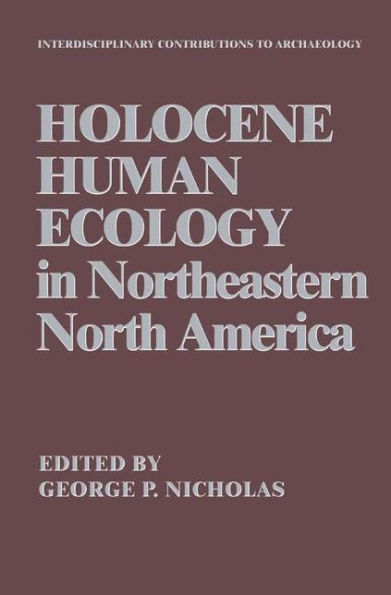Holocene Human Ecology in Northeastern North America
Students of human behavior have always been interested in the relationship between human populations and their environment. Decades of research not only have illuminated the backdrop against which culture is viewed, but have identified many of the conditions that influence or promote technological development, social transformation, and economic reorganization. It has become increaSingly evident, however, that if we are to explore more forcefully the linkages between culture and environment, a processual orientation is required. This is found in human ecology-the study of the relationship between people and the ecosystem of which they are a part. This book is a collection of papers about the recent and distant past by scientists and humanists involved in the study of human ecology in northeastern North America. The authors critically examine the systemic interface between people and their environment first by identifying the indicators of that relationship (e.g., historical documentation, archaeological site patterning, faunal remains), then by defining the processes by which change in one part of the ecosystem affects other parts (e.g., by conSidering how an ecotonal gradient affects biotic communities over time), and finally by explicating the behavioral implications thereof.
1101312363
Holocene Human Ecology in Northeastern North America
Students of human behavior have always been interested in the relationship between human populations and their environment. Decades of research not only have illuminated the backdrop against which culture is viewed, but have identified many of the conditions that influence or promote technological development, social transformation, and economic reorganization. It has become increaSingly evident, however, that if we are to explore more forcefully the linkages between culture and environment, a processual orientation is required. This is found in human ecology-the study of the relationship between people and the ecosystem of which they are a part. This book is a collection of papers about the recent and distant past by scientists and humanists involved in the study of human ecology in northeastern North America. The authors critically examine the systemic interface between people and their environment first by identifying the indicators of that relationship (e.g., historical documentation, archaeological site patterning, faunal remains), then by defining the processes by which change in one part of the ecosystem affects other parts (e.g., by conSidering how an ecotonal gradient affects biotic communities over time), and finally by explicating the behavioral implications thereof.
109.99
In Stock
5
1

Holocene Human Ecology in Northeastern North America
320
Holocene Human Ecology in Northeastern North America
320Hardcover(1988)
$109.99
109.99
In Stock

Product Details
| ISBN-13: | 9780306428692 |
|---|---|
| Publisher: | Springer US |
| Publication date: | 07/31/1988 |
| Series: | Interdisciplinary Contributions to Archaeology |
| Edition description: | 1988 |
| Pages: | 320 |
| Product dimensions: | 6.14(w) x 9.21(h) x 0.24(d) |
From the B&N Reads Blog
